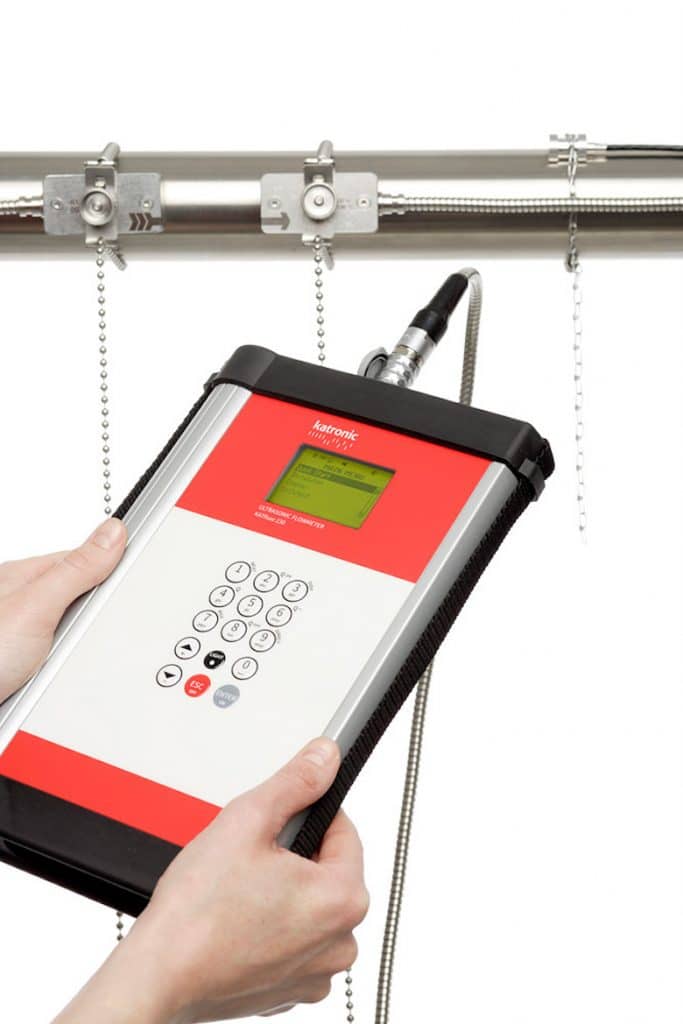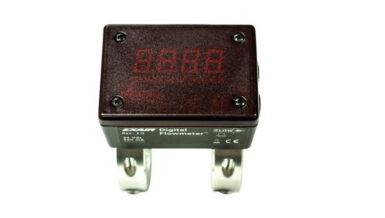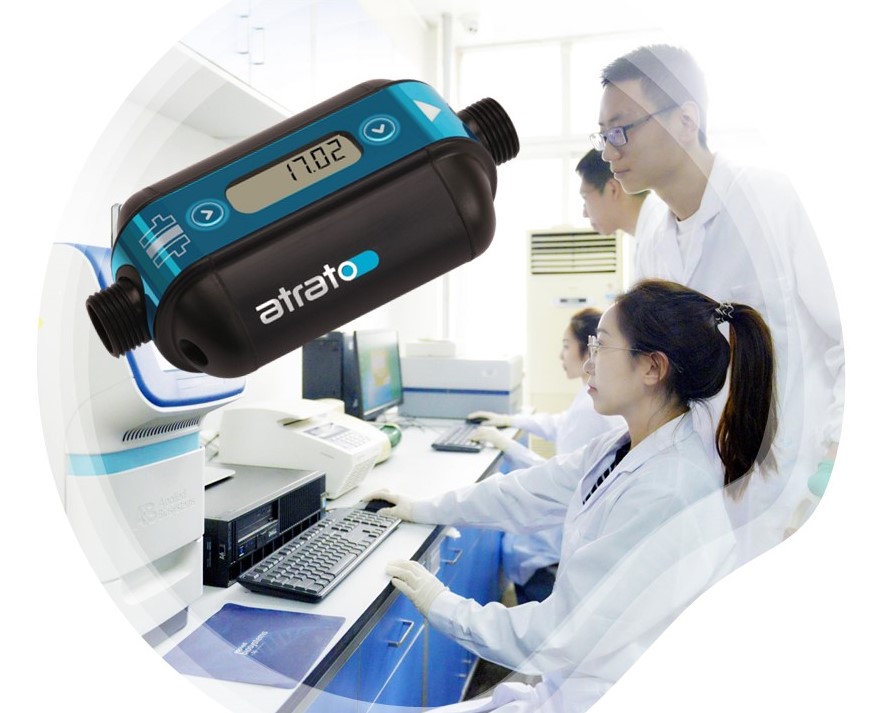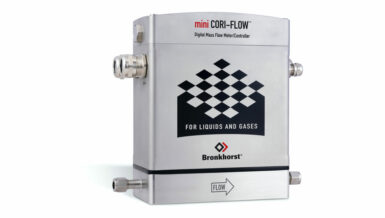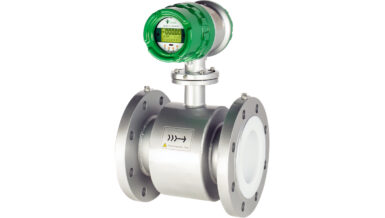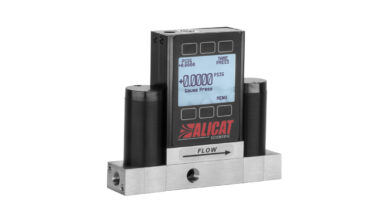It is also a critical service and the process can often only be interrupted in an emergency. Invasive flow measurement instruments, unless installed as part of a new-build project, involve breaking into the pipes, possibly including tankering and civils disturbance and even traffic management issues. They can even provide sites for microbial and algal growth to flourish. Non-invasive, clamp-on flow measurement using ultrasonic techniques provides a method to measure reliably and repeatably without interrupting the process and without compromising the cleanliness of the pipe.
How does non-invasive clamp-on measurement work?
Regardless of whether the flowmeter is fixed to a wall or is a portable, battery-powered unit, flow is sensed by a pair of compact, IP 68 rated stainless steel transducers, which are fixed to the outside of the pipe by clamps or chains. These transducers pass an ultrasonic signal through the pipe walls and the liquid. Each transducer sends and receives the ultrasonic ‘echoes’ that return through the liquid that are then analysed within the flowmeter. Advanced signal analysis compares the signal in each direction and calculates the flow velocity.
 An easy way to think of the way the measurement works is to imagine a rowing boat on a river. If the boat is rowed a known distance downstream and then back upstream, the time required varies in proportion to the speed of the river flow. In the same way the ultrasonic pulses are both emitted and detected by the pair of transducers a known distance apart, so reflections from the inside of the pipe are affected by the flow rate and so are measured both ‘upstream’ and ‘downstream’.
An easy way to think of the way the measurement works is to imagine a rowing boat on a river. If the boat is rowed a known distance downstream and then back upstream, the time required varies in proportion to the speed of the river flow. In the same way the ultrasonic pulses are both emitted and detected by the pair of transducers a known distance apart, so reflections from the inside of the pipe are affected by the flow rate and so are measured both ‘upstream’ and ‘downstream’.
Particularly on a small pipe, the difference between upstream and downstream times can be a matter of nanoseconds, so the flowmeter system considers a number of reflections, or ‘passes’ to increase the confidence in the measurement. The flowmeter analyses the reflected ultrasonic pulses, taking into consideration the effect the pipe material has on the flow. A good, modern clamp-on flowmeter will include built-in tools that help to optimise the installation, maximising the signal strength and giving dynamic feedback to make sure that the transducers are accurately positioned on the pipe.
The flowmeter is making a direct measurement of flow velocity which is then converted, based on the set up of the unit, into any other flow parameter required within the process, typically litres per second. Measurable flow rates range from 0.01 metres per second all the way up to 25 metres per second.
Typical applications – asset management and energy saving
The first question should always be ‘what are we trying to achieve?’. A clamp-on flowmeter offers a typical accuracy of ±2 % of flow velocity with repeatability of around 0.15 %. There may be critical measurements where the operator will have to accept the inconvenience and cost of an invasive approach. For the majority of applications within a process environment, however, a couple of percent accuracy is adequate.
 Clamp-on flowmeters are available in both fixed and portable forms, portable versions providing opportunities for temporary process monitoring, for example to verify pump performance, allowing service and maintenance to become predictive. Some pumps will have run for many hours, others for far less, and the wear on the pumps may have been affected by the process conditions when they were on duty. With a simple clamp-on measurement, individual pump performance can be determined directly, so maintenance priorities can be decided on the basis of actual repair and service requirements rather than time.
Clamp-on flowmeters are available in both fixed and portable forms, portable versions providing opportunities for temporary process monitoring, for example to verify pump performance, allowing service and maintenance to become predictive. Some pumps will have run for many hours, others for far less, and the wear on the pumps may have been affected by the process conditions when they were on duty. With a simple clamp-on measurement, individual pump performance can be determined directly, so maintenance priorities can be decided on the basis of actual repair and service requirements rather than time.
Higher specification clamp-on flowmeters are able to accept a second pair of transducers, along with a pair of temperature sensors. Flow and temperature measurements can therefore be integrated to directly measure heat flow. By comparing heat flow ‘in’ with heat flow ‘out’, energy usage can be directly measured, logged and tracked to identify opportunities for energy savings.
Clamp-on, non-invasive ultrasonic flowmeters are clean, easy to install and use and versatile. Water 4.0 and Industrial Internet of Things (IIoT) technologies means that process instrumentation that can be easily incorporated into an existing process is becoming more and more essential. The clamp-on flowmeter is set to be an important part of that growth.



